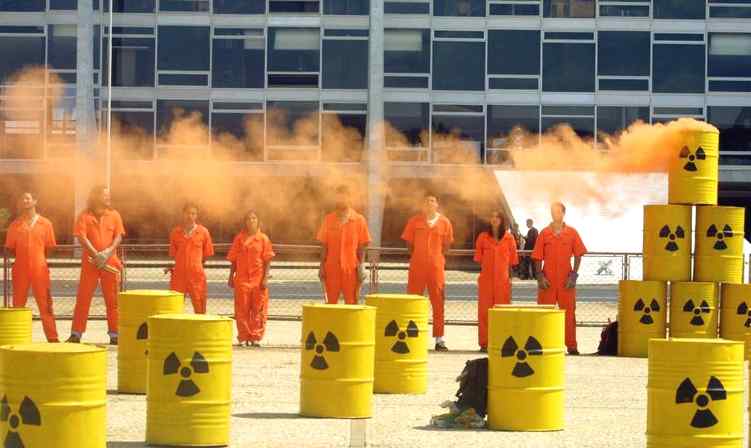by: Marcus Yam

Mario, Master Chief and Kratos in Greenpeace's "Clash of the Consoles" (Source: Greenpeace.org)
Nintendo, Microsoft and Sony tagged as toxic console makers by Greenpeace
Earlier this week Greenpeace posted a trailer depicting Nintendo’s Mario holding a Wii, Microsoft’s Master Chief holding a RROD’ed Xbox 360 and SCEA’s Kratos hit by a PlayStation 3.
No, it’s not the world’s greatest console gaming crossover – it’s Greenpeace’s jab at the three console giants for their apparent environment negligence.
“The games consoles market is one of the fastest growing in consumer electronics with over 60 million sold and 14 percent growth last year,” Greenpeace explained on its newly launched Clash of the Consoles website. “These consoles contain toxic chemicals and can contribute to the massive growth of electronic waste that's often dumped, causing widespread environmental pollution and health problems for unprotected workers.”
Greenpeace has been pushing for the entire electronics manufacturing industry to replace the use of toxic chemicals such as brominated flame retardants (BFRs) and Polyvinyl Chloride (PVC) with safer alternatives, the environmental group believes that none of the consoles produced by the big three are toxic-responsible.
“We've checked how the environmental performances of Sony, Microsoft and Nintendo measure up on toxics, recycling and energy use,” said Greenpeace. “None of these three seems even close to making a greener console.”
Sony has a policy for eliminating the worst toxic chemicals from its products by 2010, but the policy does not cover PlayStation products, according to Greenpeace. Sony won marks for having the best take and recycling programmes, but was criticized for make the most power-hungry gaming console (128 watts).
In August, Sony announced the Sony Take Back Recycling Program, allowing consumers to recycle all Sony-branded products – including PlayStations – for no fee at 75 Waste Management Recycle America eCycling drop-off centers throughout the U.S.
On the other hand, Microsoft has a policy to eliminate toxicity by 2011 but does not have the voluntary take back program. The Xbox 360 Elite was also hit for consuming more power (97 watts) than the Wii.
The Wii pleased Greenpeace for its exceptionally low power consumption (15 watts), at levels at least six times below the other systems, but Nintendo was condemned as the worst offender on the scale of toxic use, policy and recycling credits.
Greenpeace slammed Nintendo in November following a report on “greener” electronics. Nintendo was placed dead last in a list of 18 companies due to the console maker’s lack of public disclosure on its chemical and recycling policies.
Nintendo expressed surprise at the content of the Greenpeace report, releasing a statement saying, “Nintendo takes great care to comply with all relevant regulations on avoiding the use of dangerous materials, recycling of materials etc. For example, all Nintendo products supplied worldwide are designed to comply with relevant global standards.”
The company continued, “In order to certify that Nintendo products comply with standards for hazardous chemical substances, Nintendo has established the Green Procurement Standards, which require our component suppliers certify that any parts including hazardous chemical substances should not be delivered, and Nintendo fully controls its products in the company.”
Microsoft and Sony have yet to respond to Greenpeace’s claims.
